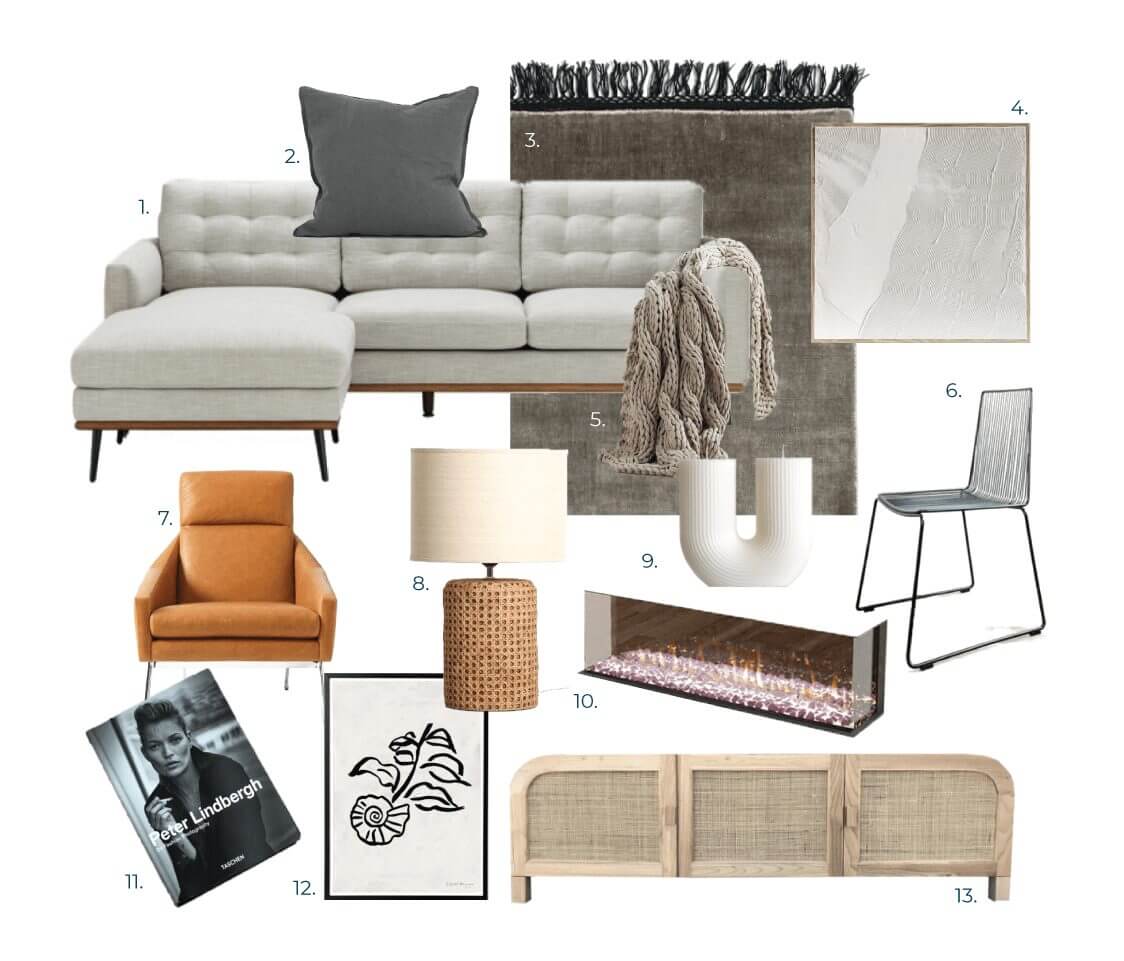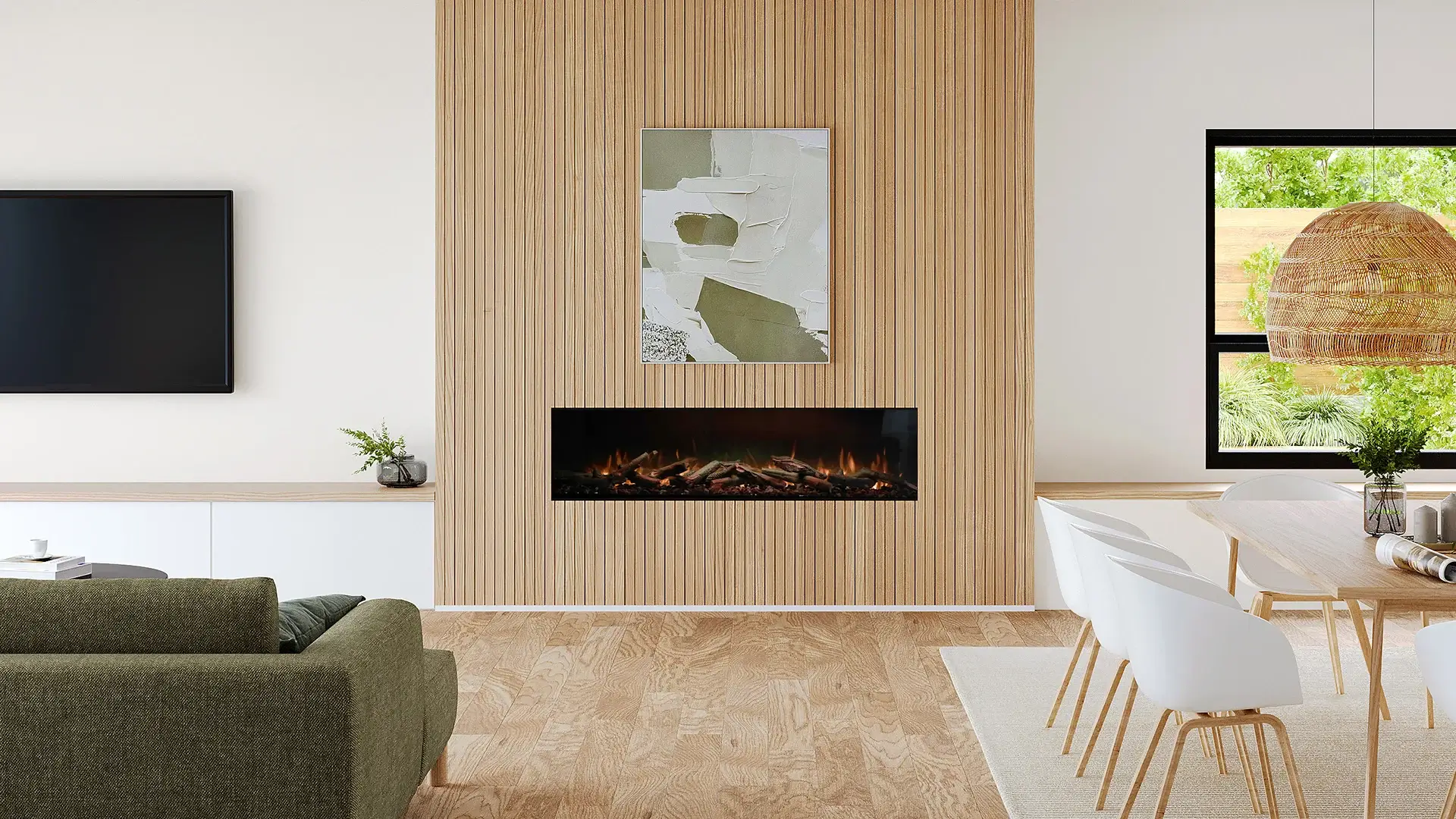
3 living room looks inspired by history’s biggest design movements
As the years go by, we watch the coming and going of trends and how these materialise in our home. Like all things, they come around full circle – just like those flared jeans that were all the rage in the 70’s.
The design world has never been as rich in history as it is right now – with so many different trends making a big come back, albeit with a fresh, modern twist. So whether you’re partial to the eclectic nature of Mid-century Modern, the opulence of Art Deco or the modesty of Minimalism – you’ll find pieces you love that reflect your true design persona.
3 living room looks inspired by history’s biggest design movements
As the years go by, we watch the coming and going of trends and how these materialise in our home. Like all things, they come around full circle – just like those flared jeans that were all the rage in the 70’s.
The design world has never been as rich in history as it is right now – with so many different trends making a big come back, albeit with a fresh, modern twist. So whether you’re partial to the eclectic nature of Mid-century Modern, the opulence of Art Deco or the modesty of Minimalism – you’ll find pieces you love that reflect your true design persona.

We all have a unique style, a style that speaks to our experiences in life. We don’t always notice the way our style is informed by world around us – and we don’t always know what our style is. But we know what we like, and what we don’t like. To help you find your style, we’ve put together three different living room looks inspired by some of history’s biggest design movements, with stunning pieces we’ve sourced from our favourite Australian and New Zealand homeware stores.
We all have a unique style, a style that speaks to our experiences in life. We don’t always notice the way our style is informed by world around us – and we don’t always know what our style is. But we know what we like, and what we don’t like. To help you find your style, we’ve put together three different living room looks inspired by some of history’s biggest design movements, with stunning pieces we’ve sourced from our favourite Australian and New Zealand homeware stores.

Mid Century Modern Muse featuring the Ambe Linear72 Electric Fireplace
The Mid-century Modern design craze is one for the ages – characterised by the juxtaposition of different shapes, sizes, patterns in a way that remains functional, thought-out, and uncluttered. Back in the day, Mid-century Modern design embraced materials that were new and novel – like metal, glass, vinyl and plywood.
Rising in popularity post World War II, it remains a significant part of design history that has resurfaced in the wake of COVID-19 as it lends itself to a celebration of worldly influences – with few restrictions, it’s one of the most open to interpretation of all design trends.
There is an eclectic nature to Mid Century design that appeals to those of us who just can’t decide. A well-executed Mid-Century modern space can include a curation of beautiful design pieces that span different eras – just don’t get carried away, there’s a fine line between Mid Century and messy…
Mid Century Modern Muse featuring the Ambe Linear72 Electric Fireplace
The Mid-century Modern design craze is one for the ages – characterised by the juxtaposition of different shapes, sizes, patterns in a way that remains functional, thought-out, and uncluttered. Back in the day, Mid-century Modern design embraced materials that were new and novel – like metal, glass, vinyl and plywood.
Rising in popularity post World War II, it remains a significant part of design history that has resurfaced in the wake of COVID-19 as it lends itself to a celebration of worldly influences – with few restrictions, it’s one of the most open to interpretation of all design trends.
There is an eclectic nature to Mid Century design that appeals to those of us who just can’t decide. A well-executed Mid-Century modern space can include a curation of beautiful design pieces that span different eras – just don’t get carried away, there’s a fine line between Mid Century and messy…

Art Deco Opulence featuring the Ambe Multi49 Corner Electric Fireplace
Art Deco design is one of the most enduring, and visually distinct design movements of all time. A well-executed art deco interior should transport you straight to the cigar rooms of The Great Gatsby – 100 years ago in the roaring twenties!
Formerly known as New Moderne, it was popularised at the French Industrial Exposition in the early 1920’s and soon took over the art, fashion and design world. Much like the sequined flapper dresses and head pieces – art deco makes a statement in opulence.
Characterized by abstract patterns and geometric shapes – think starbursts, zigzags and fans – and of course those famous art deco curves. Colours were deep, bold and moody while materials spanned from brass, mirror and coloured glass, to crushed velvet and genuine leather. Just think luxury, old sport!
Art Deco Opulence featuring the Ambe Multi49 Corner Electric Fireplace
Art Deco design is one of the most enduring, and visually distinct design movements of all time. A well-executed art deco interior should transport you straight to the cigar rooms of The Great Gatsby – 100 years ago in the roaring twenties!
Formerly known as New Moderne, it was popularised at the French Industrial Exposition in the early 1920’s and soon took over the art, fashion and design world. Much like the sequined flapper dresses and head pieces – art deco makes a statement in opulence.
Characterized by abstract patterns and geometric shapes – think starbursts, zigzags and fans – and of course those famous art deco curves. Colours were deep, bold and moody while materials spanned from brass, mirror and coloured glass, to crushed velvet and genuine leather. Just think luxury, old sport!

Modest Minimalism featuring the Ambe Multi49 Bay Electric Fireplace
At it’s essence, Minimalism is built on the philosophy “less is more”. Minimalism as a design concept first emerged in the 1960’s, as a retaliation against some of the more complex art movements that came before them. Minimalism focuses on extreme simplicity, functionality, and stripping everything back to the basics. Widely regarded as one of the most significant design movements of the 20th century, minimalism takes inspiration from Japanese culture – everything must serve a purpose.
Much like the Marie Kondo craze of de-cluttering – Minimalism gets rid of distractions in the hope that a person or a space can find true peace in experiences rather than things and ultimately achieves a better design through simplicity.
Modest Minimalism featuring the Ambe Multi49 Bay Electric Fireplace
At it’s essence, Minimalism is built on the philosophy “less is more”. Minimalism as a design concept first emerged in the 1960’s, as a retaliation against some of the more complex art movements that came before them. Minimalism focuses on extreme simplicity, functionality, and stripping everything back to the basics. Widely regarded as one of the most significant design movements of the 20th century, minimalism takes inspiration from Japanese culture – everything must serve a purpose.
Much like the Marie Kondo craze of de-cluttering – Minimalism gets rid of distractions in the hope that a person or a space can find true peace in experiences rather than things and ultimately achieves a better design through simplicity.

So, what does characterise Minimalism? Quality curated and thought-out items that will stand the test of time and provide a function above all else; open and light filled spaces, stand-out feature pieces, and of course, a muted, monochromatic palette of whites, beiges and greys.
If in doubt, leave it out.
The design world is an exciting place, it’s fast paced and constantly evolving – sometimes it can be hard to keep up. The important thing is to stay true to your taste and create synergy between your home and your lifestyle. And if don’t think you’re keeping up with the trends, don’t worry – everything comes around full circle so hold onto those flares – and keep those floral curtains in storage, we heard that 70’s retro is making a big comeback.
So, what does characterise Minimalism? Quality curated and thought-out items that will stand the test of time and provide a function above all else; open and light filled spaces, stand-out feature pieces, and of course, a muted, monochromatic palette of whites, beiges and greys.
If in doubt, leave it out.
The design world is an exciting place, it’s fast paced and constantly evolving – sometimes it can be hard to keep up. The important thing is to stay true to your taste and create synergy between your home and your lifestyle. And if don’t think you’re keeping up with the trends, don’t worry – everything comes around full circle so hold onto those flares – and keep those floral curtains in storage, we heard that 70’s retro is making a big comeback.





